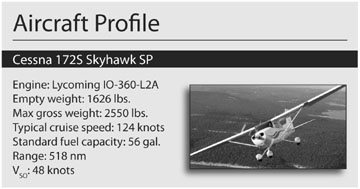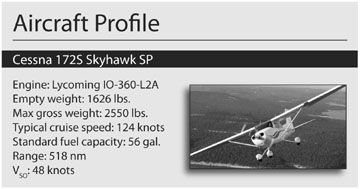By Joseph E. (Jeb) Burnside
The romance of flying to an out-of-the-way location, one only accessible with a personal airplane, is a powerful attraction to many pilots and their passengers. Unfortunately, the landing areas at many remote destinations-resorts, fishing camps, islands and lakes come to mind-are not the wide, paved runways we came to know and love during our primary training. Often, the paved runways available at remote airports are poorly maintained-bumpy, for example, or marked with well-faded paint. And, if youre flying something that can land and takeoff on water, you have a completely different set of priorities to consider when trying to find that perfect weekend destination or fishing spot.
More common at such destinations, however, are turf runways. Unlike a paved landing area, using a turf runway can be very deceptive. For example, because most turf runways are wider than their paved counterparts, it can be difficult to judge length. Additionally, they rarely are as smooth as pavement and can feature soft spots and high grass that rob an airplane of its ability to accelerate with its wheels on the ground. And turf runways are usually shorter than paved ones, with trees and other obstructions lining the ends and sides. These natural obstructions can combine with tricky winds to make both airspeed control and the airplanes landing/takeoff performance a very real concern. A real danger is when a short, soft runway is combined with poor technique.
On June 6, 2003, a 140-hour Private pilot demonstrated how not to use a turf runway when the Cessna 172S Skyhawk SP he rented was destroyed on impact with trees and terrain during the initial climb from Runway 28 at the Pricket-Grooms Field Airport (6Y9) in Sidnaw, Mich. The pilot was killed in the accident and his passenger was seriously injured.
Background
The 6Y9 facility is a non-towered airport at an elevation of 1373 feet msl with a single 2000-foot-by-100-foot turf runway oriented east-west. According to several resources, the runways condition is rough, very rough for the first 200 feet at each runway end, and soft when wet. The facility includes a windsock located approximately halfway down the runway.

Unsurprisingly, there is no weather reporting capability at 6Y9, although good VFR seemed to prevail. Automated observations from airports as far away as 48 nm included scattered clouds, easterly or southerly winds at six to 10 knots (one airport reported gusts to 14 knots) and temperatures around 20 degrees Celsius.
According to the NTSB, the CFI who conducted the accident pilots flight review three months earlier said he last received flight instruction on a grass airstrip during the pilots primary training. He added that the pilot had very little experience on grass airstrips since receiving his Private certificate based upon what he could remember.
Witness Reports
In addition to the surviving passenger, three people on the ground witnessed the accident. According to the NTSB, on arriving at the destination, the pilot flew over 6Y9 at a relatively high altitude to take a look at the airstrip, the passenger later related. The pilot then decided to take another look at a lower altitude. Subsequently, the pilot told the passenger everything looked fine and it should be easy to land.
The pilot maneuvered for a landing from the east and the airplane touched down about halfway down the runway, bounced, and touched down a second time.At this point, the pilot told the passenger they had to go up and try it again, because they were getting too close to the end of the runway.According to the passenger, the pilot seemed a little nervous at this point and started a bank to the left. The passenger reported that as they banked to the left, the plane dipped, and he felt something hit either the wing or another part of the airplane. He said he felt it hit and suddenly it turned the plane and they hit nose first into the ground.
The other three witnesses were parked in a truck adjacent to the south side of the runway. One of them later stated that the airplane touched down in front of them and again about 50 feet further down the runway. The airplane then accelerated, seemed to climb sharply, then banked left and disappeared it behind trees. This witness reported the airplanes attitude seemed fairly flat, with a slight upward pitch.
The second witness stated that the airplane appeared to be moving at a good rate of speed and in a level position when it first touched down. It immediately made a very slight hop and touched down again. Seconds later it was climbing; a few seconds after that the witness saw the airplane go down.
The third witness stated that he did not see the airplane touch down but did observe the airplane on the runway and said it seemed to have too much speed. The airplane then left the ground and began to pull up. Soon, it was apparent that the airplane did not make it over the trees.
Investigation
The wreckage was located in an area consisting of about 50-foot-high 736 feet west of the departure end of Runway 28. The airplane was oriented in about a 90-degree nose down attitude with the tail section bent over an additional 30 degrees past the airplanes vertical axis. The nose cowling and firewall was crushed rearward and onto the accessory section of engine. Both propeller blades exhibited twisting about the lateral/spanwise axis and chordwise bending.
The wings and control surfaces remained attached; each wing fuel tank was about full. The flaps were retracted. Flight control continuity from all control surfaces to their respective cockpit controls was confirmed.
Aftermath
Its not clear why the pilot apparently attempted a downwind landing (although the windsocks indications were not included in the NTSB report, nearby weather observations included surface winds out of the east or south-the pilot was attempting to land on Runway 28). Its also not clear why the airplane didnt touch down until approximately the runways mid-point, although a slight tailwind on the final approach could account for this.Additionally, the mid-runway touchdown could have resulted from the pilots failure to control the airspeed and/or poor obstacle-clearance technique-the witness reports of the airplane moving fast and the gentle bouce it made tend to support the lack of airspeed control.
Most likely, however, all of these factors combined to put half of the available runway behind the airplane before it touched down.
Additionally, its not clear whether the pilot extended the wing flaps for the landing and retracted them during the go-around attempt, or if they were never extended. Neither the passenger nor the ground-based witnesses noticed their position.
Flight training publications and Pilot Operating Handbooks (POHs) are crammed with information on how to land and takeoff from short or soft fields. In this instance, the NTSB quoted FAA publication FAA-P-8740-7, The Safe Pilots 12 Golden Rules, which states, in part, [a]lways plan touchdown 200 feet inside of runway threshold and [a]bort landing if not solidly on in first / of runway. (First if wet grass.)
The NTSB also referenced the Cessna 172S Skyhawk Information Manual. According to the NTSB, notes that accompanying that publications landing performance chart include For operation with tail winds up to 10 knots, increase distances by 10% for each 2 knots, For operation on dry, grass runway, increase distances by 45% of the ground roll figure, and If landing with flaps up, increase the approach speed by 9 KIAS and allow for 35% longer distances.
Also according to the NTSB, the total distance required by the 172S to clear a 50-foot obstacle while landing is 1320 feet, more than half of Runway 28s length at 6Y9.
Probable Cause
The NTSB found this accidents probable cause to be The improper short/soft field landing procedure by the pilot and his lack of recent experience in [the] operation. Contributing factors were the short/soft field runway, the trees and his delay in aborting the takeoff. Thats a fair summation.
Each summer, pilots attempt to get into or out of runways that are too short, too soft, or both. They do so despite years having elapsed between their last for-real practice or instruction in such operations. And each year, some sheet metal gets bent, injuries occur and people get killed.
As this example demonstrates, a careful pilot should closely examine his airplanes performance charts and the local conditions before attempting to land or take off on any unfamiliar short/soft runway.




